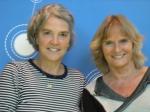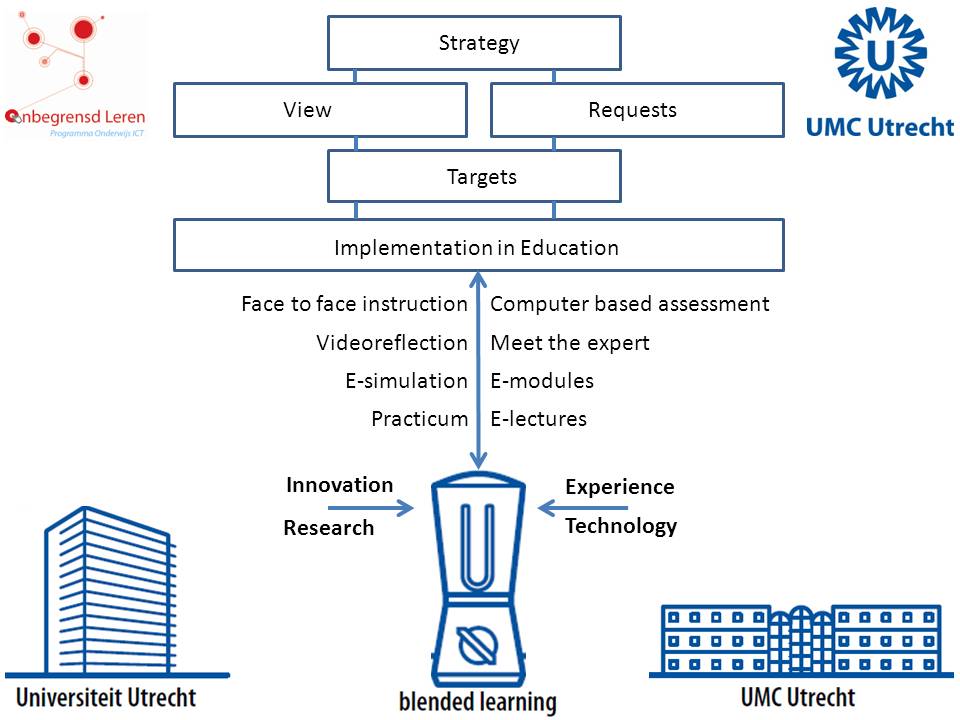


Theme
5II Online learning 2
INSTITUTION
University Medical Center Utrecht
The University Medical Centre Utrecht started a four year strategic Educational ICT programme "Learning without Limits" to boost the development of blended learning in all its educational departments. The programme amounts to 5.5M€, employing 45 persons.
Goals
Contribute to effective, efficiënt, attractive, lifelong learning and more patient safety.
| E-modules | 68 e-modules and tools for production and management |
| E-simulations | 21 e-simulations, a platform and prototypes |
| Comp Based Assessment | 44, of which 7 large scale; up to 340 students |
| E-Lectures | 1889 e-lectures, new recorders, dedicated instruction rooms |
| Video-reflection | protocol, training courses, tutorials |
| Innovation | Flipping the classroom, multi source feedback, apps, ideas |
| Programme overall | Blended learning is a integrated part of the curricula |
- Blended Learning is here to stay.
- Financial means are a pre-requisite for the future and governance of ICT in education.
Large scale investment in the development, implementation and support of e-tools, based on teacher initiated projects, is a strong driver for curriculum innovation. It fuels the commitment of teachers and allows curricula to start long term, well evaluated and controlled didactic improvements. ‘
Keys to success
• Common view and involvement (topdown and bottom up)
• Opportunities for experiments, pilots and innovations
• Working together in a motivated team of experts

 Send Email
Send Email